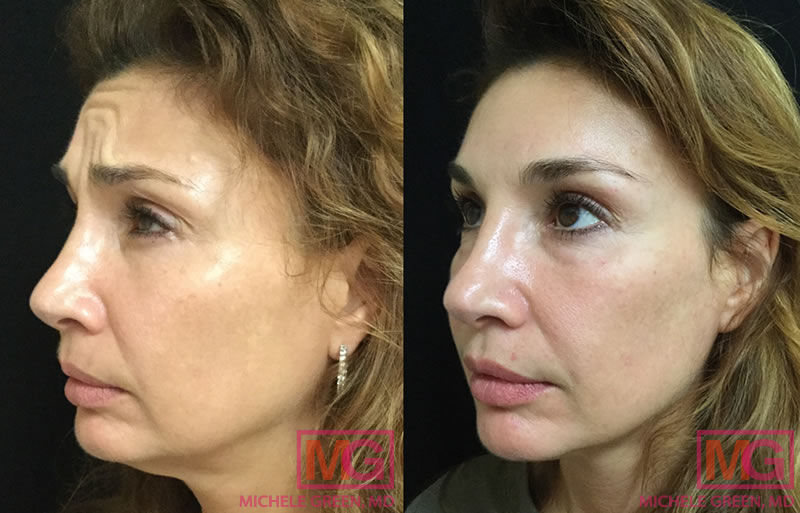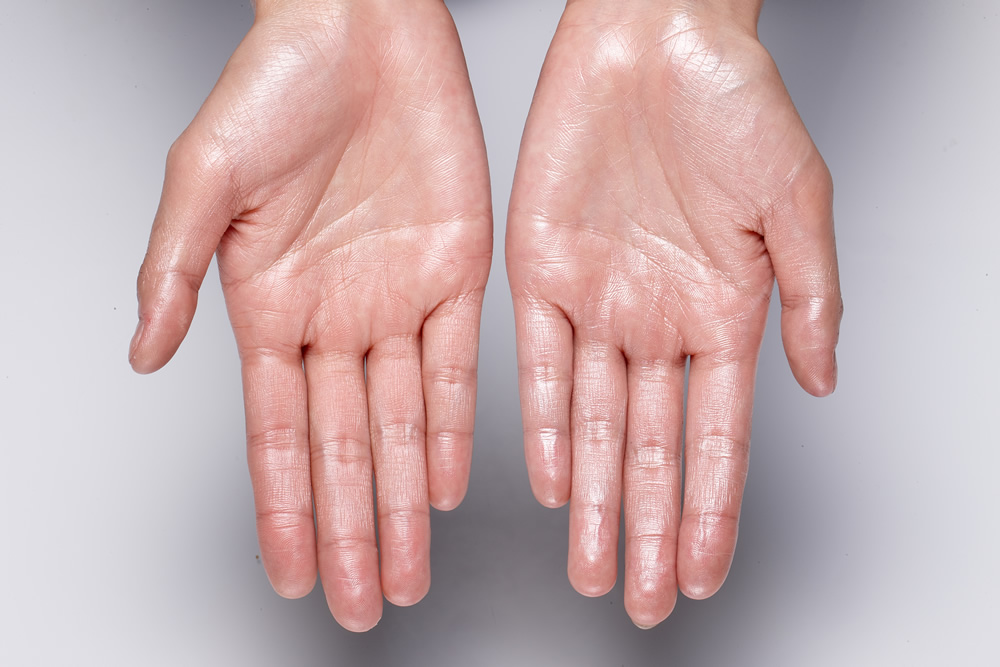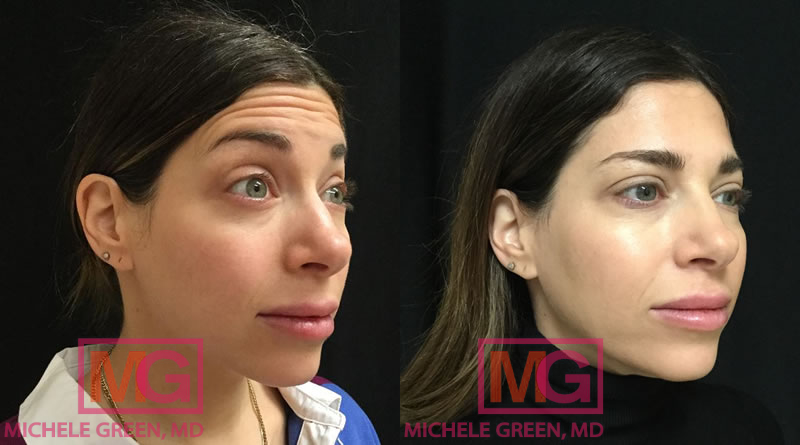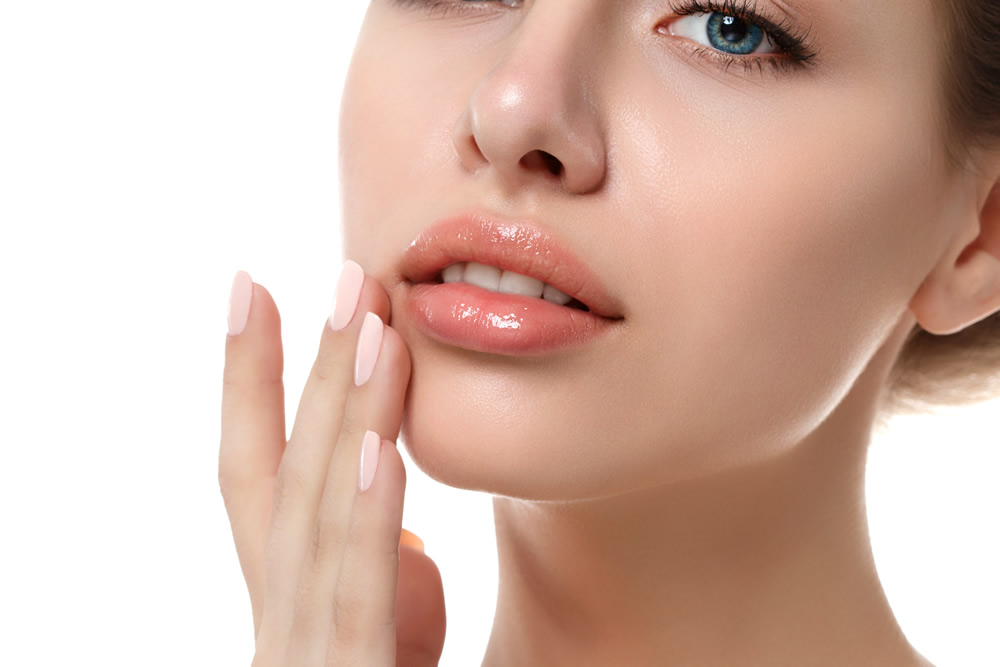Micro-Botox
With all of the modern innovations in non-invasive injectable treatments, our patients now have a myriad of different ways to rejuvenate the skin. Fine lines and dynamic wrinkles can be treated with dermal fillers, like Juvederm and Restylane, as well as neuromodulators, such as Dysport and Botox. Conventional Botox injections have been a go-to for patients for over a decade. Botox reduces the appearance of dynamic wrinkles by essentially “freezing” the nerve signals to muscles in the treatment area, which in turn relaxes the facial muscles. Traditional Botox is an excellent option for patients seeking to reduce the appearance of fine lines and wrinkles, and also has some additional treatment uses, such as shrinking sweat glands and sebaceous glands to control excessive sweat and oil production, respectively.
However, Botox has developed a reputation for limiting muscle movement to the point that facial expressions can appear stuck or frozen due to inexperienced injectors that use the same Botox treatment for every patient. This is why Dr. Green has curated her Botox injection technique to include a variety of different styles, including micro-Botox treatment. Micro-Botox, also known as baby Botox, intradermal Botox, or meso-Botox, uses small dose micro-injections of Botox in order tailor subtle and natural results that do not limit facial movement. It’s an excellent method to rejuvenate the skin, and is particularly popular amongst younger patients hoping to prevent wrinkles from forming.
If you’re looking for natural-looking, effective facial rejuvenation, board-certified dermatologist Dr. Michele Green is here to help. Dr. Green is a platinum Botox provider, with over 25 years of cosmetic dermatology experience in injectables such as Juvederm, Restylane, Sculptra, and other dermal fillers. An internationally renowned expert in “baby Botox,” her “less is more” philosophy and natural looking results, make her consistently voted as one of NYC’s top dermatologists.

45-54 year old woman treated with Botox
What is Micro-Botox Treatment?
Micro-Botox treatment is a non-invasive cosmetic treatment that uses the same exact formulation as regular Botox, meaning that it relies on the neurotoxin botulinum toxin in order to limit nerve signals to the muscles within a treatment area. This in turn encourages those muscles to relax, thus reducing or preventing the development of dynamic wrinkles. The primary difference is that the FDA-approved, traditional Botox is diluted and injected via microdroplets into the the superficial level of the dermis.
This diluted Botox is a wonderful method to treat more delicate facial muscles, such as crow’s feet, as well as to balance out minor asymmetries. It’s also popular for patients who have fine lines and wrinkles in sensitive areas such as the neck and jawline. It’s an innovative method for treating patients with mild to moderate fine lines and wrinkles, as well as for younger patients seeking preventative wrinkle treatment. Additionally, micro-Botox treatment is effective method for reducing pore size, sweat gland size, and sebaceous gland size. In some cases, continued micro-Botox treatment can cause a sweat gland to atrophy, which prevents sweat production from the gland entirely. This means that micro-Botox may be a useful treatment for patients who are suffering from excess sweat, oil production, or even active acne breakouts. Learn more about Botox for hyperhidrosis.

How to Dilute Botox
In order to formulate micro-Botox injections, conventional Botox can be diluted with non preserved sterile saline. Dr. Green’s office is expertly trained in diluting Botox formulation in order to safely and effectively provide micro-Botox treatments. When it comes to micro-Botox, it’s imperative that you work with an expert dermatologist in order to ensure the safety of the treatment. Many medical spas and “Botox party” injectors are improperly trained on safe and effective measures when it comes to Botox injections. This insufficient background in medicine can lead to dangerous side effects, including impairment of facial muscles.
How long does Micro-Botox last?
Micro-Botox, like traditional Botox, lasts on average 3-4 months. However, when micro-Botox is combined with other cosmetic treatments, such as hyaluronic acid dermal fillers, results can be extended by several months. When you work with Dr. Green, she’ll be able to discuss your medical history, current skin condition, and aesthetic goals to determine a personalized treatment result with optimal results.
Can you do Botox under eyes?
Thanks to micro-Botox methods, Botox can be delivered under the eyes to resolve fine lines. Dr. Green also frequently combines Botox around the eyes with more gentle dermal fillers under the eyes in order to craft an artful, rejuvenated “eyelift” for her patients. Learn more about Dr. Green’s cutting edge eye area rejuvenation techniques.
Does Botox help Rosacea?
In recent years, the dermatology world has recognized that Botox can be used for a variety of helpful skin issues, including that of Rosacea. For those who suffer from flushing rosacea and are frustrated by the appearance of redness and tenderness on the surface of the skin, micro-Botox may be a useful, long-lasting treatment option. Current study suggests that the neurotoxin within Botox, botulinum toxin, can interfere with the blood vessels’ ability to dilate, thus reducing the redness that many rosacea patients face. Learn more about how Dr. Green treats Rosacea.
Can you microneedle with Botox?
Micro-Botox can be administered via diluted injections of traditional Botox, which relies on conventional injection methods, where a topical numbing cream is applied to prevent any potential discomfort. Micro-Botox can also be applied via the process of microneedling. Microneedling uses tiny, “thinner-than-a-strand-of-hair” needles in order to engage the wound healing properties of the skin, stimulating collagen production within the layers of the dermis. Microneedling also creates micro-channels into the dermis that can increase the absorption of revitalizing serums and nutrients, as well as micro-doses of cosmetic injectables like Botox and various dermal fillers.
What is a “Botox Facial”?
A “Botox Facial” is often defined as the administering of micro-Botox treatment via microneedling device. Through the use of microneedling, Botox can be applied via micro-channels within the dermis, creating subtle and incredibly natural facial rejuvenation. Like micro-Botox injections, a “Botox Facial” requires no downtime, and often is considered to be an instant facelift for patients seeking artful facial revitalization.

37 year old female treated with Botox
What is Gold Micro-Botox?
Aquagold fine touch, also referred to as Gold Micro-Botox, is an innovative in-office microneedling device that can be used to administer micro-doses of injectable cosmetic treatments, including Botox, Restylane, Juvederm, Dysport, Xeomin, and restorative vitamins and peptides such as B12 and Cytocare 516. Aquagold uses 24-karat gold microneedles that create tiny pinpricks on the surface of the skin, which in turn creates micro-channels into the dermis that are ideal for the absorption of micro-Botox treatment. Aquagold fine touch is safe and effective on even the most delicate areas of skin, and can deliver 1,200-2,000 micro-injections of Botox or other revitalizing serums per minute.
Aquagold fine touch is the only FDA-approved microneedling device exclusively for medical professional use. It’s a revolutionary device in the world of dermatology and skincare, and Dr. Green recommends Aquagold treatment for any patient seeking microneedling infusions and rejuvenation.
Can you get microneedling after Botox?
If you’re wondering, can you microneedle after Botox, it’s important to consider timing. Due to the nature of Botox’s formulation, it’s recommended that patients wait at least two weeks after Botox treatment before engaging with any further microneedling treatments. However, microneedling as a means to deliver micro-Botox, like the “Botox Facial”, is an incredibly effective and safe way to deliver facial rejuvenation.
Can I get Botox after microblading?
Microblading, a semi-permanent form of brow tattoo, is a popular treatment for patients who are seeking fuller eyebrows. It can often be a positive treatment in combination with rejuvenating treatments like Botox, but timing is everything when it comes to complementary treatments. In general, we recommend patients engage with microblading prior to Botox treatment to honor your natural brow line, and wait about two weeks until proceeding with conventional or micro-Botox treatments.

Botox Treatment vs. Plastic Surgery
Many patients choose to engage with Botox treatments in order to create total facial rejuvenation without the need for invasive plastic surgery. Unlike a surgical facelift by a plastic surgeon or other invasive methods, Botox injectable treatment requires zero downtime, with results that appear almost immediately and last for several months. Additionally, the flexibility that micro-Botox treatment offers can help to address minor facial asymmetries and fine lines and wrinkles more effectively and artfully than most surgeries can offer. Many patients also find that the pricing for micro-Botox treatments is much more competitive than the cost of surgical procedures.
If you’re seeking natural-looking facial rejuvenation, micro-Botox treatment may be right for you. Dr. Michele Green has over two decades of experience in cosmetic fillers, Botox injections, microneedling, laser treatments, chemical peels, non-surgical body contouring, and non-invasive skin tightening lasers. If you are considering Botox for the first time, consider micro Botox injections with Dr. Green’s advanced injection techniques. To learn more about our non-invasive cosmetic treatments and to develop your custom treatment plan with Dr. Green, please contact our NYC based office today or call 212-535-3088 to learn more about whether Botox is right for you.
 212-535-3088
212-535-3088